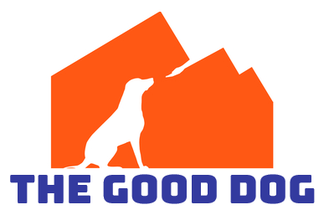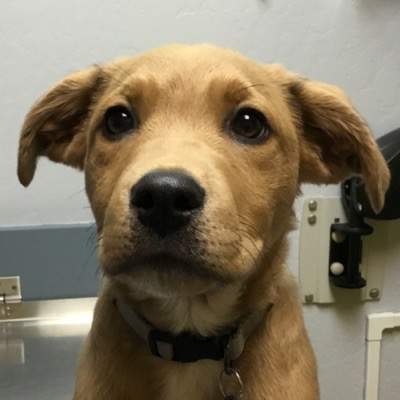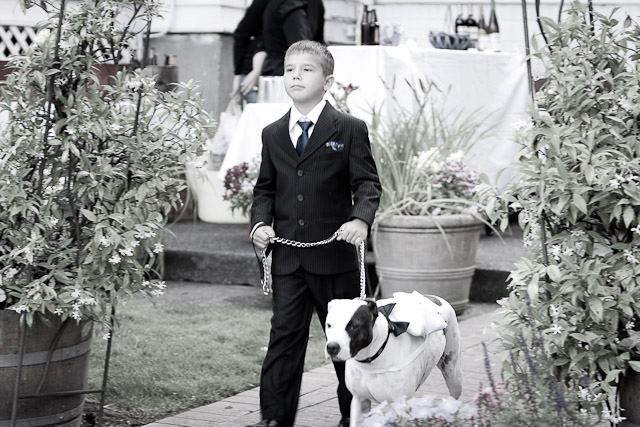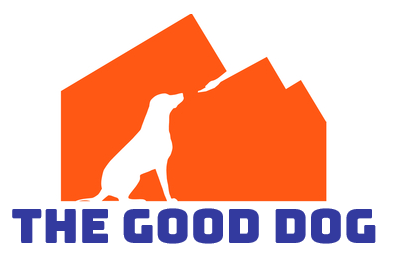|
We are rebranding ourselves! Gone are the days of spending 5 minutes typing out our web address and email! Look for us now as The Good Dog! Please continue to help us by telling your friends about us, just remember call The Good Dog!
0 Comments
Come follow the "Life of Bill"! We recently acquired a puppy for Ellis to train as his work/demo dog. His name is Bill and is a MUTT from the Valley. He will be 14 weeks old on Friday, October 6th. We are posting (almost) daily videos on Facebook and Youtube giving you tips, tricks, and addressing all sorts of puppy behaviors. Such episodes include "Playtime with Bill", "Going to the Park with Bill", and "Jumping on Toddlers with Bill." Come watch with us as Bill grows and learns all about life as a canine behaviorist's dog! Subscribe on Youtube and follow us on Facebook to see these videos as soon as they are released! Click the links below!
 How frequently have we heard this statement? We're at the dog park and we see that cute little fellow with the mixed breed features. When asked, the owner inevitably turns and with their best pious expression, explains to you how the poor creature was saved from certain annihilation by the ravenous bugblatter beast of Traal. While I do not mean to make light of animal abuse or the importance of removing animals from harmful environments and rehabilitating them, we must consider the implications to the dog. For an animal as fluent in the forms of non-verbal communication as the dog. One can assume that it is not difficult to notice when it is made the object of people's pity. If you don't believe me go tell your dog he's a "poor baby" right now, and ask him whats hurting him. I'm sure that regardless of his present comfort his stomach will suddenly become painfully empty or his bladder painfully full. So what happens to a "rescue dog"? In a pleasantly high number of cases, the dog is taken home by somebody who is prepared to love it very much. Often, these kind and caring people are gratified by opportunity to show kindness to a creature that has been such a victim of neglect and abuse. While this is right and good, the effect can be negative if not balanced with solid rules and structure. If every time our dog needs to eat we respond, without requiring effort or contribution on his part, we weaken his or her sense of entitlement. In other words, it would be rather inappropriate for you to be angry that you failed to receive a birthday gift, yet, there are legal avenues in place, to aid individuals in prosecuting employers who fail to pay. This means that when you give your dog the gift of food, water or shelter he has no reason to feel that it is something he has control over or a right to. This weakens the animal's sense of security in your household and leads to behaviors such as separation anxiety ("oh no...they're gone...without my benefactor I will surely die! Bye bye door trim"), or behaviors like resource guarding or reckless eating (I don't know when I'll get food again! Quick posses it all!). On the other hand, if your dog is engaged in a social contract with you in which you each provide for the other what they cannot. Then your dog can sit in front of his bowl, or bring you a beer, or come and nudge your hand, and he can know that, because you each have defined responsibilities to each other, if he upholds his end of the bargain, you will as well. Your contract and responsibilities are completely up to you and your household to decide and define for yourselves. In my house the dogs sit in a specific place in the living room, away from the kitchen before feeding time, this means that if I forget to feed them and walk by to find them sitting in that place, I will be reminded and immediately uphold my end of the contract. This enables him to expect that in response to his measurable efforts, you will provide for him, which means that he can expect the necessities of life as due and just reward instead of a gift from a merciful god. About the merciful god; While it can feel oh so nice to be the gracious benefactor that has saved this pitiful, helpless creature from the jaws of doom itself, we must imagine what if feels like to be the pitiful, helpless creature. Your dog does not define himself as a broken creature, if asked he would say he is a dog, or that his name is "Fido", or that he likes to smell poo, not that he is a rescue dog. So that means that we, the handlers, actually have to do the harder thing. When we want to simply give, first we must ask for them to uphold their end of the contract (whatever it may be.) Not to demean them, but rather, to work towards the more subtle and distant goal of a deep and lasting sense of peace, belonging, and safety. In all we must believe that our not dog is not pathetic, but powerful, not rescued, but, a rescuer, the trainer must expect excellence from the dog and then patiently, gently, and positively guide and craft the dog into the best possible version of itself.  I can't say enough about the importance of a kennel. Make it squishy and comfortable and full of things your dog loves, but use it. Just like a child, your dog needs to sleep in their own bed to gain a sense of security, structure, and stability. When you go to bed or leave the house, put your pup in his kennel. If you haven't started this from puppy hood, it will be hard at first. The dog will howl and scratch and make a world of noise, but it is meant to train you to let him out. Dogs law: if it works I'll do it again, if it doesn't I wont. I know from a woman's side of things how hard this can be. You feel bad for them because they sound like they are dying, but they're not. They are completely safe and just want you to let them out. Consistency is crucial here. Your dog will remember that one time they got away with it. If you are consistent, within a couple weeks he will be pawing to get into his kennel when he's sleepy, scared, or just feels like he needs security. Also, if the dog is causing trouble, its a great time out spot, as long as the kennel is a refuge, especially from human emotion. Tips to help make it easier: if the dog is not the shredding type, put one of your sweaters or a piece of clothing you wear a lot in the kennel. The smell will comfort him. Provide a lot of blankets; dogs like to nest (unless the dog is a shredder or likes to eat blankets, in which case this might be somewhat dangerous). You can leave the radio or TV on for the dog, something calm but with human voices. Don't forget exercise. Make this dog so tired when you leave the house he has no choice but to sleep. Happy training everyone! Leash behavior is always one of the more complicated activities to train and refine as evidenced by the fact that it is one of the activities that you will find most handlers struggle with. The manner by which I correct forging (pulling on the leash) has always worked for me without fail. It has also, without fail, been initially rejected by clients because it is simply an overwhelming amount of work. One can always employ the use of a tool such as a choke chain, prong collar, gentle leader, easy-walk harness, spray collar or shock collar to effect rapid change but they all suffer from the same shortcoming. If you are yanking on a leash, saying "no" or in any other way punishing your dog then you have taken responsibility for its location when you're walking (I.E. He/she doesn't have to think or apply himself to the concept of walking next to you; rather he/she simply does whatever he/she wishes until you correct/inform them). If you simply hold the leash tight so that the dog is held in the same location, then you give them even less responsibility to be aware of their location, because they can simply walk away from you until they feel the leash come tight and then hang on it. So, I treat all of the tools of walking exactly like a carpenter treats his hammer, its useful but unable to build a house without a skilled person to handle it. So, when I approach a session in which I plan to teach a dog to walk I must carefully organize my concepts/plans/priorities.
First, clocks are the bane of healthy leash behavior. When we apply human schedules to leash walking we give up our first and most powerful weapon; the fact that the dog's desire to move forward exceeds your own. This means that the dog is therefore motivated to meet your requirements because you are larger than him/her and are not going to let go of the leash. This means that the dog MUST figure out a way to acquire your cooperation if he/she is to move forward. This simple knowledge that you must cooperate for your dog to achieve his/her goals precludes all other forms of correction, because you can negate your dog's most basic desire in the walking environment (moving forward), without even looking at him/her. This means that the handler must simply change their perspective of walking. The goal ceases to be moving forward, and become the training of your dog's mind the handler frees themselves from their sense of schedule and can now begin to actually correct the forging behavior. The easiest system by which to ingrain the concept into the dog is by thinking of yourself as a very simple machine. You take the leash by the loop and any pressure on your hand breaks you. The more that you can act out this concept the more quickly and finally your dog will alter his/her behavior. So, you're walking along, your hand gets pulled on and you immediately stop without saying a word. The first thing your dog will do is NOT CARE AT ALL. Do not give up. After a couple of minutes the dog should turn to the handler to ask "what in the heck is wrong with you?” Please note: Younger or more imaginative dogs will take longer to become bored or notice that something has broken their handler in the first place, lazier dogs are apt to lie down on the spot and nap (Understanding the correct methods to counter those behaviors or speed the process are too complicated for facebook and are a good reason to hire me). Once the dog has turned around to angrily require why you have suddenly become so irritating and stupid and have stopped walking, you should simply smile at them and pleasantly indicate where they are supposed to be (normally on your left side). Odds are they will immediately answer this information with a statement along the lines of "Why should I care?" and the game begins. See, once the dog as turned to you to discover why you are broken, he/she has engaged their cognitive thought to the concept of where they should be while walking with you (something a choke chain cannot, by nature, do). So, you stop walking, dog says "why human", you say "go here", dog says "why do I care?"...at this point you could make the mistake of attempting to force the dog to care...but then you have, again, taken responsibility for their behavior, so you must simply ignore them. This forces them to recognize/decide on their own (without resentment or resistance towards the handler) that they must cooperate to continue moving. You continue to only, attempt to, inform the dog of where they should be AFTER they have requested the information, by engaging you in some form or another. The minute that they step next to your knee, you can simply start walking again like you're a machine and they pushed the correct button. This creates a concept in the dog's mind that if he pulls on the leash you CANNOT walk further and so they will immediately push the "Restart" button on the ground next to your left foot. Please note: While the first couple of hour long attempts to walk with your dog will be painful and time consuming the dog's learning will be cumulative. Meaning the more you practice it the better they will become and the more quickly they will improve. Within 2-6 hours of practice 90% of dog/handler teams I've worked with can walk with the leash completely loose and tucked into a pocket without any hands on the animal or leash. Under these conditions if the dog feels any tension on the leash whatsoever they will snap back into correct position with their body language proclaiming apologies. The threshold for a skilled team should be such that the leash should never be pulled from the handler's pocket. I have attempted to cover an immense body of concept and of course there will be some rough areas to figure out so please feel free to ask lots of questions. |
PC for above picture -
The Journey Photography by Cris. AuthorEllis Gugel received a bachelors degree in Canine Studies from Bergin University of Canine Studies and applies a method that views the dog through a scientific light. It appeals to the higher cognitive functions that allow the dog to become more intelligent and intuitive than was previously thought possible. Archives
September 2024
Categories |
Web Hosting by iPage





 RSS Feed
RSS Feed

